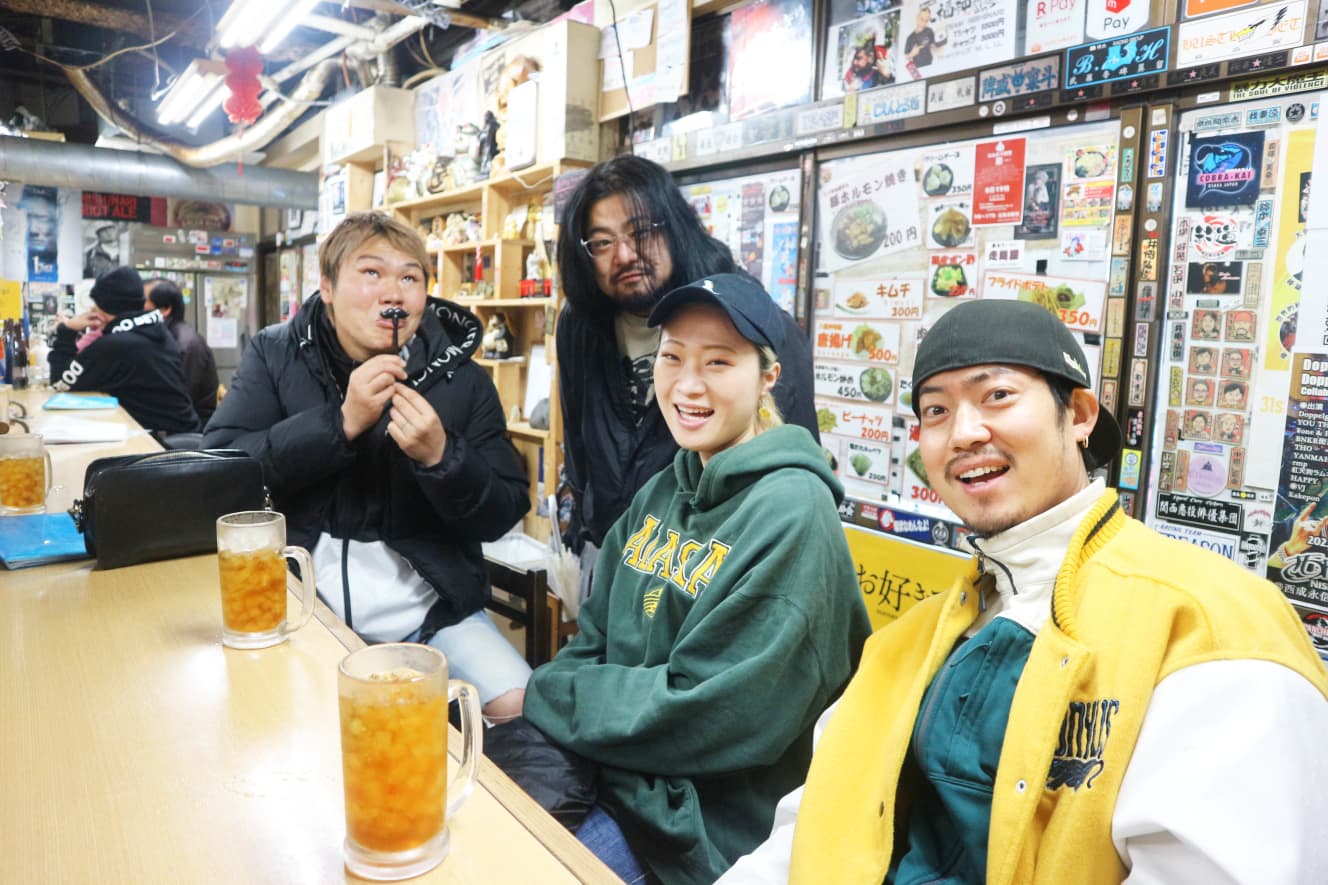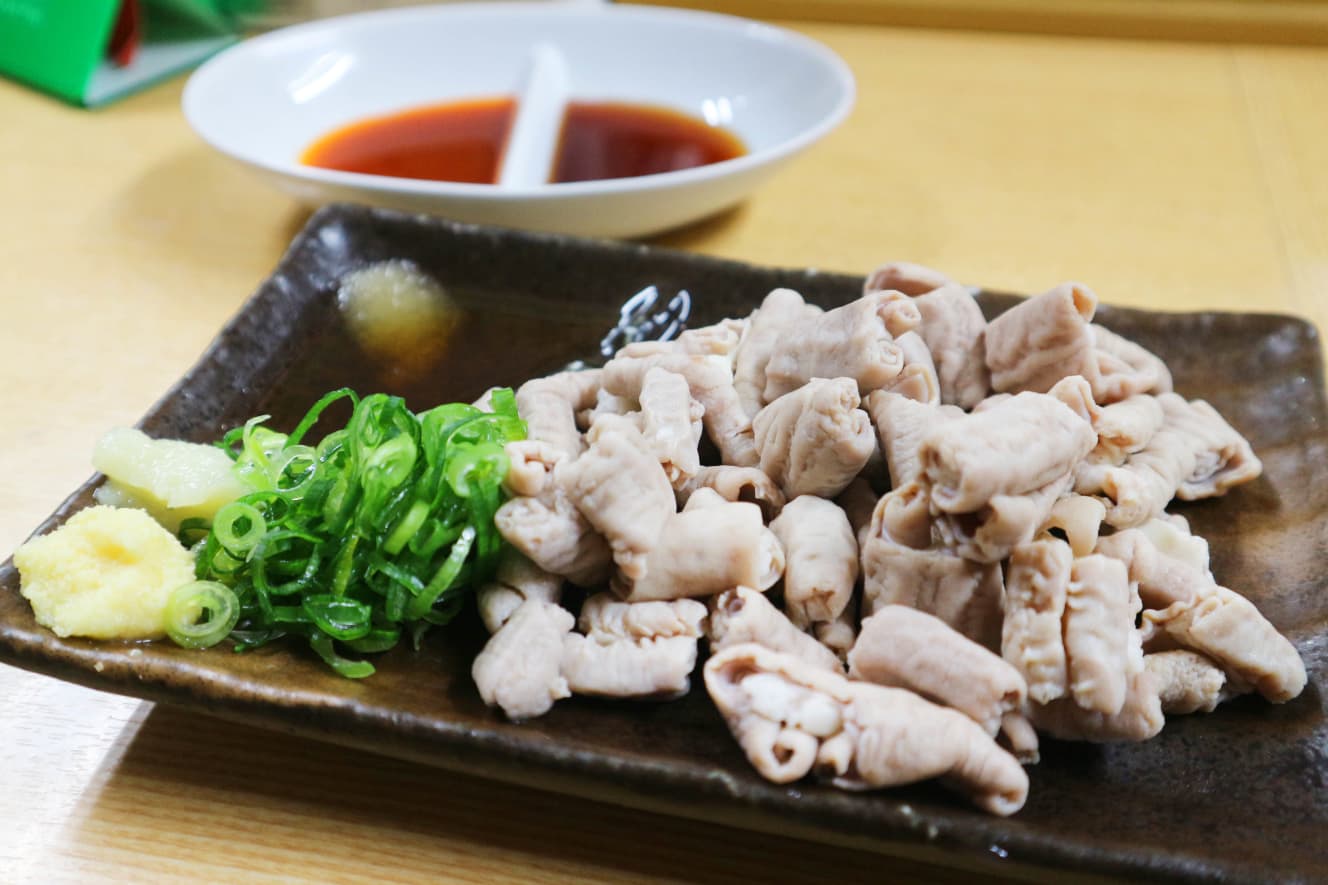The world’s gourmet town, Tsutenkaku area “Nishinari” is now attracting the world’s attention… A special gastronomic tour with a local heavyweight!
Morning in Nishinari is not coffee, but “beer”!
Osaka has several heavenly drinking spots such as Tenma and Kyobashi, but recently, Nishinari seems to be hot. OMO7 Osaka by Hoshino Resort,” a hotel that opened in April 2010, and “Super Tamade,” the birthplace of Nishinari, which is popular among inbound tourists……it has become a “neo-gourmet town” where foreigners visit Japan on tours, and where the latest girls come all the way for a drink! The “Super Tamade” has become a “neo-gourmet town” where foreigners touring to Japan come to drink.


I thought, “I’m going to make my debut in Nishinari, too! I thought, “I’m going to make my debut in Nishinari,” but many of the famous restaurants have already been introduced on YouTube and other media, so I asked one of Nishinari’s leading figures to show me the best places to eat.
Mr. Tatsuro Morisawa and his merry band of friends

That is Tatsuro Morisawa-san. Some may wonder who he is, but he is the owner of Nishinari’s famous bar “Drinking Place Hachifukujin” and is also active in welfare projects such as a children’s cafeteria and employment support. He is a charismatic figure in Nishinari.
We asked such a leading figure in Nishinari to take us on a special Nishinari eating (and drinking) tour.
1_Happoshin, a place where people in the movie industry and boxing professionals gather.

First of all, although it is not a discovery, let us start with “Hachifukujin” run by Mr. Morisawa. Located right in front of Shin-Imamiya Station, this world-famous restaurant is visited by foreign groups in tour buses.
Morning is not coffee, but sake
What is surprising is that when you order a morning meal, you are served sake, not coffee. At Yafukujin, sake is the restaurant’s staple as a morning and lunch set. You can choose from 10 different side dishes, including meat tofu, fried hormone, and Neapolitan, with rice, miso soup, and sake for only 500 yen (!!!). ~The set includes rice, miso soup, and sake for 500 yen (!!!).
The nikutofu (meat and tofu) is thickly seasoned, and the beef is so hearty that you might think it was sukiyaki. The rice and vegetables are grown in Toyono-cho, and the ingredients are uncompromising.

The new menu item, chilled horumon (cold hormone) 600 yen, is also thoroughly prepped so the pork chops do not smell bad. It is eaten while changing the taste with sesame oil with a dash of garlic, raayu, ponzu, etc. It is cold but not hard, and it is not gnarly and hard to bite through. It is a COOL new summer menu item!

Please excuse the photo with a sense of being on the verge of eating. This is the one I often buy at the side dish section of the supermarket these days. Deep-fried chicken skin is really tasty. The batter is also infused with garlic, and the oily potential of the skin, which releases its fat when you bite into it, is as good as chicken can get. The beer is as kinky as a Kaiji.
2_Popular YouTuber Joe’s “Lady Go
Now next is “Lady Go,” a hormone shop run by Joe, a YouTuber famous for his Joe Blog.

Joe-san is busy going to ruins and deserted islands, so he basically doesn’t stand in the store.
This older brother is Mr. Ten Yakushiji. He is a regular customer at Lady Go. He says, “Don’t worry. It will be what it will be. Get a good night’s sleep.” He taught us his theory of happiness!

Although it is a horumon restaurant, they also have a full lineup of entrées, and I especially recommend the “Young Corn with Pork Shiso Cheese. It’s a literal dish, so there’s not much to say about it, but the crispy texture of the young corn and the cheese is exquisite, and the mild saltiness goes perfectly with the strong flavor of the hormone.

First, let’s try the Hi-Riki! I ordered it because I was told to. I was told that it is more alcoholic than other shochu liqueurs and therefore more cost-effective. But even if it is higher in alcohol, it is only 7%, so it is too sweet for me who drinks 14% wine like water. But I didn’t want to say anything because I was afraid I would be rejected.

Abra yangnyom 300 yen, hormone 250 yen (yay!) ) and other hormone dishes, served in a tofu packet. When I was taking pictures, everyone was eating the abra yangnyom, but when I asked what it tasted like, they replied, “Korean style. I asked what it tasted like and they replied, “Korean style.” I guess that’s right, it’s yangnyom. By the way, this abra is “kiku abra,” which is one of the fattiest pork hormone. It looks delicious.
Probably the most garlicky fried rice in Osaka!

Yes, fried rice is one of the specialties at Lady Go. It looks ordinary, doesn’t it? But it is filled with garlic and seasoned very strongly. It is fresh and spicy with chopped garlic and ginger, not a tube of garlic.

Everyone was so kind as to accompany me for this interview, and since it was before work, they were non-alcoholic, yet they were as high-strung as drunks. I learned that true socializing is only possible when you are sober, as I am unable to communicate with others without drinking.
3_Yakiniku and hot pot restaurant run by a former Asian champion
Oh no, I’ve taken up too much time with the two restaurants, and the manuscript is getting redundant. I’m going to run through it from here.

Next up was Nabe Maru, Yutaka’s restaurant. I thought I was going to get a nabe, but it was meat again!
Steak Lunch Halami 150g 1480 yen and up. This wild visual is indeed a stamina menu prepared by a former champion. The original garlic sauce that comes in a bottle is superb. The meat is medium rare and chewy.
Snow crab from somewhere.

When I was satisfied with the meat, snow crab appeared. I wonder if this is what they mean by “Shuikeikurin” (drunken meat forest). They say that their friends buy them in large quantities at a low price and offer them to reduce food loss. Look at this miso. It’s the kind that drowns in a sea of miso.
The legs are also fresh enough to be eaten as sashimi. I heard it costs around 3,500 yen per serving, but it is almost the end of the season, so I apologize if it is sold out.

Perhaps they think I am a food fighter, but a two-color nabe also made an appearance. It is half and half of beef bone hot pot and chige. Beef ribs, thick fried tofu and vegetables are laid in a broth made from the marrow of the beef bones. The soup is thick and has a strong beef flavor, reminding me of the beef bone ramen I had in Tottori, Japan, which had a cloudy soup.
The chige is very spicy, but the fat from the pork belly eases it and makes it mild. I wanted to ask for noodles.
4_The restaurant of a hunter who catches both wild game and seafood by himself
Actually, I was going to go to Kazuki-san’s restaurant next, but on this particular day, the entire staff was down with a cold and the restaurant was closed…or rather, I was too hungry to eat.

So we visited “Nishinari Kazuki’s House” later that day. It is located in an easy-to-understand place called “Toy Men” in Triangle Park.
This is the ultimate restaurant where Kazuki serves wild game, including deer and wild boar that he hunts himself.

While running a construction company, Mr. Kazuki “loves to catch something,” so six years ago he obtained a hunting license, bought a mountain, and started chasing deer and wild boar. He also buys a boat and fishes as he is a two-skilled hunter who catches fish as well as birds and beasts. He is a fearsome hunter.
At his restaurant, he uses all the sea and mountain food he catches for his dishes. By the way, there was a cute little boy in the restaurant. He replied, “He is my grandson. I am 40 years old, but I am already a grandfather.

I was embarrassed to know that Mr. Kazuki, who is younger than I am, is running a company and a restaurant and even hunting.

Putting my self-denial aside, I decided to have a bite of the food. The photo shows a deer cutlet for 660 yen, a limited menu item only available when deer are caught. The part of the cutlet changes depending on the time, sometimes it is the back, sometimes it is the thigh, sometimes it is the front leg, and sometimes it is the back.
I had just had a tooth pulled that day and could not eat hard food, so I was prepared to swallow the whole thing, but I was able to bite through it. When I asked him about it, he said, “The meat is cut in such a way as to cut off the fibers, so it is tender. Deer has no smell, and it has a different aroma from beef or pork, so it has a good point that deer don’t have. What nonsense!

If you admired the deer, you will find the beef. It is beef jaw with grated ponzu sauce, 495 yen. I wondered why he only served me hard-looking beef… but the texture of this beef was not so different from that of the ribs. I wondered why he serves only hard-looking meat to me with bad teeth… but the texture of this meat is not different from that of ribs. The unique slightly crunchy texture is pleasant. The ponzu (Japanese sauce made of vinegar and soy sauce) makes it light and crispy, and it goes well with chopsticks.


The most popular menu item is the wild boar nabe (wild boar stew) for 2 people for 2,080 yen, with a choice of soy sauce garlic, sesame miso, or sukiyaki. The base is a seafood broth, and the wild boar is made from whatever parts are available at the time. The quality of this dish exceeds that of the 8,000-yen button nabe served at a minshuku (Japanese inn) deep in the mountains of Kyoto.
When I came back, the restaurant had been turned into a tempura shop.


In addition to gibier and seafood dishes, tempura is also his specialty. During Kazuki’s long absence, Yutaka-san, who appeared earlier, came to him and said, “I want to eat tempura. Why don’t you serve it here?” He turned the restaurant into a tempura restaurant on his own.
We went around Nishinari for two days, and we were filled to the brim with hormone, steak, crab, deer, wild boar, and so on…we were full to the brim.
Oh, yes, I heard that the movie “Nishinari Goldfish” that Mr. Morisawa is shooting is scheduled to be released this year. The film features celebrities such as All Giant, Rikiya Kaido, and Bunbuku Katsura, as well as ordinary townspeople, and is said to be (on the way) a humanistic work of art!
SHOP LIST
Interview, text, and photos: Shigeru Nekota
Born in 1979. Worked as an editor and writer for town magazines, travel books, and recipe books. Currently, as a web writer, he writes on a wide range of topics from decadence to traditional crafts. He loves to drink despite his weakness, and his life motto is "Sake is best drunk while walking.
Another blog
Shigeru Nekota's food blog "I love quirky restaurants! https://nekotashigeru.site/